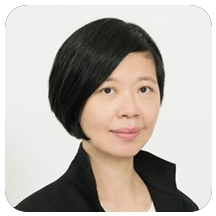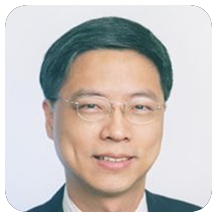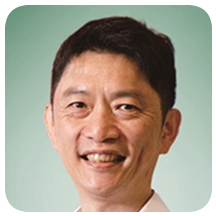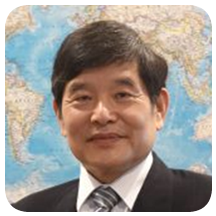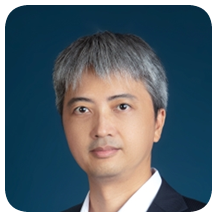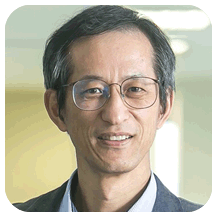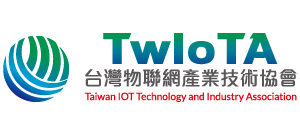Agenda
Registration
Opening
Dr. Bor-Sung, Liang|Senior Director, MediaTek (Chair, IEEE CASS Taipei)
Remarks & Photo
Dr. Lawrence Loh|Corporate Senior Vice President, MediaTek (President, MediaTek USA)
Dr. Chia-Lin, Yang|Deputy Executive Secretary, Office of Science and Technology Policy (OSTP), National Science and Technology Council (NSTC)
Dr. Chyou-Huey, Chiou|Director General, Department of Industrial Technology, Ministry of Economic Affairs
Introduction of IEEE CAS Society
Dr. Kea-Tiong (Samuel), Tang|Professor, EE, National Tsing Hua University (Vice President, Regional Activities and Membership, IEEE CASS RAM (Region 10))
Challenges in Advanced IC Design Industry: From Technology to Talents
Dr. Meng-Fan (Marvin), Chang|Director, Corporate Research, TSMC
Host: Dr. Bor-Sung, Liang|Senior Director, MediaTek
Edge AI Application Evolution – Opportunity and Challenge
Dr. Allen Lu|Assistant General Manager, Computing and Artificial Intelligence II FU, MediaTek
Host: Dr. An-Yeu (Andy), Wu|Professor, EE, National Taiwan University (Director, MediaTek-NTU Research Center | Fellow, IEEE)
In this presentation, we aim to explore the emerging trend of shifting from a cloud-centric approach to a collaborative cloud-edge paradigm for generative AI technologies. We will delve into the multitude of opportunities and challenges that lie ahead when supporting generative AI on edge devices. This transformation entails a synergetic blend of technological advancements, enhancements in hardware architecture, and the reduction of computational complexities, ultimately enabling the realization of novel generative AI applications.
Panel Discussion
Taiwan's AI Computing Journey: Challenges and Opportunities
Moderator
Dr. Shih-Chieh, Chang|General Director, Electronics and Optoelectronic System Research Lab, ITRI
Panelist
Dr. Chen-Yi, Lee|Vice President, National Yang Ming Chiao Tung University
Dr. Meng-Fan (Marvin), Chang|Director, TSMC
Dr. Allen Lu|Assistant General Manager, Computing and Artificial Intelligence II FU, MediaTek
Mr. Frankwell Lin|Chairman and CEO, Andes Technology
Dr. Tuo-Hung (Alex), Hou|Director General, Taiwan Semiconductor Research Institute (TSRI)
Welcome and Registration
Opening : RISC-V is Leading Technology in the World
Mr. Frankwell Lin|Chairman, RISC-V Taiwan Alliance (Chairman and CEO, Andes Technology)
Welcome Remark
Dr. Chih-Peng, Li|Director General, Department of Engineering and Technologies, NSTC
Dr. Alex Wang|Chairman, Taiwan IoT Technology and Industry Association, TwIoTA
Group Photo
Welcome Note
Lu Dai|Board Chair, RISC-V International (Senior Director, Technical Standards, Qualcomm)
RISC-V is Inevitable
Ms. Calista Redmond|CEO, RISC-V International
Bridging the Divide: Unifying RISC-V through Binary Translation
Dr. Philipp Tomsich|Technologist and Founder of VRULL(Chair of the Applications & Tools Committee, RISC-V International)
Binary translation is a well-established technology with widespread high-profile implementations. Recognized as an infrastructure or "public utility," it demands open-source accessibility to maximize its benefits for the entire RISC-V community. To spearhead the development and ongoing stewardship of a free and open multi-ISA binary translation framework, we have recently launched a non-profit initiative.
Scalable RISC-V for Digital Transformation
Wei-Han, Lien|Chief CPU Architect and Senior Fellow Architecture, Tenstorrent
RISC-V offers customization, flexibility, and vendor independence, making it valuable for organizations embracing digital transformation. Its open-source nature allows businesses to design, modify, and implement processors based on RISC-V specifications without proprietary licensing constraints. This enables the creation of processors tailored to specific workloads, optimizing performance, energy efficiency, and cost-effectiveness.
By lowering entry barriers for semiconductor startups and companies, RISC-V fosters innovation and the development of specialized hardware solutions. This adaptability makes it suitable for integrating with emerging technologies like AI and IoT, making RISC-V a foundational technology for digital transformation initiatives seeking to leverage these innovations.
Tenstorrent's RISC-V processor can further enhance the digital transformation journey with its advanced capabilities and unique features. Tenstorrent develops AI processors based on the RISC-V architecture. AI is a crucial component of digital transformation, and Tenstorrent's RISC-V processor is designed to excel in handling AI workloads. Tenstorrent’s wide-range of superscalar RISC-V IP's support cloud computing/storage servers, enable edge computing for real time power-efficient processing, and support connecting IoT devices to gather data essential for digital transformation.
By combining the strengths of RISC-V with a specialized focus on AI and data processing, Tenstorrent's RISC-V processor is positioned to accelerate digital transformation initiatives. Its ability to handle AI workloads efficiently, support edge computing and IoT devices, enable data analytics, promote customization, drive innovation, and enhance security makes it a valuable asset for organizations seeking to leverage AI and data-driven insights to transform their businesses.
Extending RISC-V Intelligence from Cloud to Edge
Dr. Charlie Su|President and CTO, Andes Technology
In this talk, we will discuss the rising demands for intelligence everywhere, and illustrate existing solutions for the Cloud AI and how they are being adopted in the edge applications, using AndesAIRE™ (Andes AI Runs Everywhere) solutions as an example.
Trends in AI & Automotive: Personalization, Privacy, Data Protection, and LLM on RISC-V
William Wei|CMO & EVP, Skymizer
The latest trend in AI is the use of large language models (LLMs) and foundation models as the next generation AI Infrastructure to power advanced features on AI SoC. LLMs are trained on massive datasets of text and code, and they can be used to perform a wide range of tasks with even reasoning capability. One of the advantages of using RISC-V for AI SoC to run LLMs is that it is an open architecture. This means that it is not controlled by a single company, which makes it more secure and reliable with freedom in design.
One of the key challenges in the development of AI-powered vehicles is the need to protect user privacy and data. As vehicles collect more and more data about their surroundings and their occupants, it is important to ensure that this data is secured and not misused.
In this presentation, we will discuss the latest trends in AI & Automotive, with a focus on personalization, privacy and data protection. We will also discuss the advantages of using RISC-V for AI SoC to run LLMs.
Keywords: AI, Automotive, LLM, RISC-V, privacy, data protection
Break
Panel Discussion
Moderator:
Prof. Tien-Fu, Chen|Associate Dean / Professor, Department of Computer Science, National Yang Ming Chiao Tung University
Panelists:
Dr. Philipp Tomsich|Founder and Chief Technologist, VRULL
Mr. Wei-Han, Lien|Chief CPU Architect and Senior Fellow Architecture, Tenstorrent
Dr. Charlie Su|President and CTO, Andes Technology
Mr. Jim Lai|Chairman of the Board, Skymizer
Mr. Tony Lin|Vice President, Sales Marketing, Synopsys Taiwan
Mr. Michael Wang|Associate Vice President, Corporate Marketing, UMC
Closing and Networking
